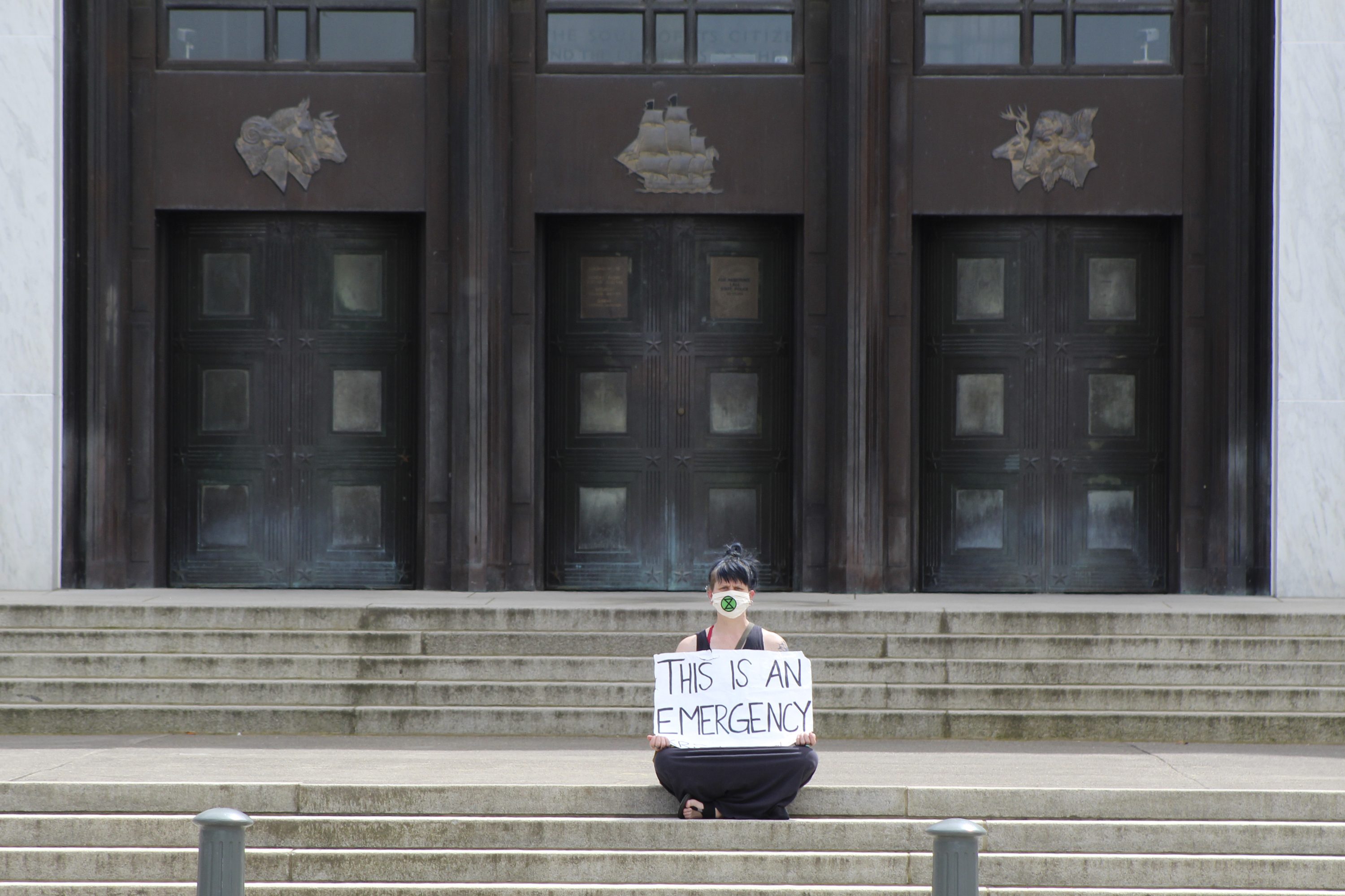
In this Tuesday, June 23, 2020, file photo, a lone masked protester sits in front of the Oregon State Capitol in Salem, Ore. Coronavirus cases are increasing rapidly in Oregon, which is cause for concern.
Andrew Selsky / AP
A second wave? A third? A continuation of the first? Whatever you want to call it, COVID-19 seems to be spreading faster in Oregon, across the country and around the world.
Experts say this increase comes at a time when governments should be trying to get cases down, ahead of an expected fall wave.
“What we’ve seen in the last week is not good news,” said Dr. Ann Thomas, a public health physician at the Oregon Health Authority, “The trend is going up.”
In the last month, Oregon has twice broken its own record for the most cases reported in one day. From Monday, Oct. 5 through Sunday, Oct. 11, Oregon recorded 2,418 new cases of COVID-19, the highest weekly total since the pandemic began. The previous week, Oregon recorded 2,055, the highest weekly total since Oregon’s last spike in July.
Compared to many other states, Oregon’s case count and transmission rates are very low — in overall numbers and on a per capita basis.
Even so, the trend doesn’t look great. Winter is coming, and COVID-19 cases are expected to surge as people spend more time indoors and travel to visit friends.
In a CNN interview Monday Dr. Anthony Fauci, the head of the National Institute of Allergy and Infectious Disease, said that these rising numbers are “the worst possible thing that could happen as we get into cooler months.”
The lower cases are before fall starts, the smaller a potential fall wave will be.
In some areas, governments are taking drastic measures, enacting some of the strictest anti-COVID-19 rules since the pandemic swept across the world this Spring. Paris is enacting a curfew. The Spanish state of Catalonia has closed all nonessential indoor businesses, including restaurants.
This case increase in Oregon is not unexpected. The last disease model created by the University of Washington for the Oregon Health Authority showed that even in a best-case scenario, COVID-19 transmission was expected to increase.
It’s not clear why case counts are rising so much, but there’s another concerning trend emerging from Oregon’s data: more of the new cases are “sporadic,” which means that they can’t be traced back to contact with a previous case, than ever before.
Thomas says that up until now Oregon’s data has shown cases occurring in big outbreaks or household clusters. But now, OHA is seeing “one or two cases, here or there,” Thomas said.
That’s concerning, she said, because it means community spread is rising. It could also indicate a shift in Oregonians behavior as they spend less time outside.
“We had a good run from July to August, with six or seven consecutive weeks of drops, but we never got cases as low as we had back in May,” Thomas said. “And there does feel like a change in behavior, first with Labor Day, and wildfires, and some return to school and cold weather.”
It’s also noteworthy that young adults, age 20-29, continue to be the most-impacted group.
“That’s the age that, when you think about it, is most likely to be classified as an ‘essential worker,’” Thomas said. People who work checkout counters, work in restaurants, or work in other public-facing jobs tend to be younger. That puts them more at-risk for community exposure.
There’s another group that stood out in Oregon’s data last week: children age 10 to 19.
That group saw very few cases over the summer and in the spring. But now, older children are being diagnosed at a rate comparable to some adult groups.
“The trend seems to have started going up on the week of Sept. 12 to Sept. 19. There was a big jump that week,” Thomas said. “There was another big jump this last week, so it could potentially be tied to kids in school.”
It’s hard to parse that out. Oregon tracks cases linked to schools, and so far, those cases seem to be sporadic, with just a handful of cases popping up in a few individual schools here and there. It could even be that kids aren’t getting sick in school.
“Certainly being back in school can kind of increase that feeling of being social, even if you’re just seeing your friends virtually," Thomas said. “It might not occur to you all summer long when you’re not seeing those people.”
That could also explain why there hasn’t been an increase in younger ages: Older kids are more independent and more mobile. It’s also the age group that puts the most importance on friends and socializing.
Thomas isn’t sure if what Oregon is seeing is the start of a fall wave or just a spike. It’s even possible that a wave will never come: respiratory viruses tend to do better in the winter than the summer, and there are certainly more chances for transmission as people move indoors.
“It’s definitely a peak,” Thomas said. “Let’s hope it’s, you know, another short one.”